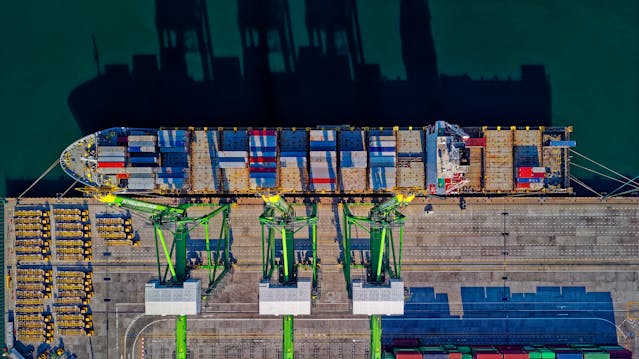

As Southeast Asia (SEA) emerges as a dynamic hub for automotive lubricants, the industry witnesses a transformative journey shaped by digitalization. This shift enhances operational efficiency and caters to evolving customer expectations, fostering innovation in the automotive lubricant market.
The automotive lubricant market in Southeast Asia has experienced significant technological milestones. In the 1990s, advancements in technology improved manufacturing processes and led to the development of synthetic lubricants. The 2000s saw a push for innovative materials, driven by the rise in modern machinery, energy efficiency needs, and environmental responsibility. The 2010s focused on brand differentiation and customer experience, offering specialized lubricants and value-added services.
In the current phase, digitalization has become a cornerstone, transforming the entire value chain of the automotive lubricant industry in SEA. This evolution is characterized by connected supply chains, the rise of e-commerce and online platforms, IoT (Internet of Things), predictive maintenance tools, and data analytics and insights.
Digitalization helps the growth of the automotive lubricant industry, which had a market size of USD 9 billion in 2022, and is projected to surge to USD 11.4 billion by 2030. It contributes to a significant 60% of the total market share.
Looking ahead, SEA’s automotive lubricant market points to a growing demand for specialized lubricants in commercial vehicles, a shift towards synthetic lubricants, and the continued dominance of retail channels in distribution. These dynamics reflect the evolving landscape of the SEA automotive lubricant market.
The growth of digitalization in the automotive lubricant industry is propelled by several key drivers, such as the need to respond to technological advancements, changing customer expectations, operational efficiency needs, and market competitiveness.
1. Push from Major Players: Key players in each SEA country are actively collaborating with digital technology enablers. Leveraging platforms like IoT, cloud computing, and data analytics, they enhance supply chain visibility, customer engagement, and foster innovation among stakeholders.
2. Rise of Online Marketplaces: The increasing tech-savviness and extensive internet coverage in SEA have prompted automotive lubricant companies to embrace digitalization. This shift aligns with customer preferences for seamless experiences through omnichannel platforms, personalized interactions, and easy access to information.
3. Internal Operations Optimization: Digital transformation empowers automotive lubricant companies to achieve greater efficiency, productivity, and profitability. By embracing digitalization, these companies streamline operations, minimize errors, optimize resources, and enhance their bottom line.
4. Branding Enhancement: In SEA, industry trends and competition are key drivers of digitalization adoption. Government masterplans further improve the technological landscape. Embracing digital transformation gives companies a competitive edge, enhances customer experiences, and optimizes operations to stay ahead of market trends.
While digitalization takes center stage, the automotive lubricant industry in SEA is also witnessing other innovations that contribute to its growth and resilience. This includes the development of specialized lubricants, value-added services such as online platforms for oil selection and interactive customer support, and a continuous focus on environmental sustainability.
Source: https://ycpsolidiance.com/white-paper/SEA-automotive-lubricants

The Latest Trends in Digital Payments in Southeast Asia
The digital payment landscape in Southeast Asia (SEA) is marked by rapid growth and innovation, with mobile wallets, RTPs, and BNPL services leading the charge. However, regulatory barriers, limited digital infrastructure, security concerns, and interoperability issues pose significant challenges.

Increasing Digital Health Technology Adoption in Thailand
Thailand has been making significant strides in adopting digital health technologies, positioning itself as a leader in Southeast Asia. The integration of digital technologies is streamlining its eHealth system, including healthcare delivery, enhancing patient convenience, and improving overall efficiency.

Driving the Future of Automotive Lubricants in Southeast Asia
The automotive lubricant industry in Southeast Asia (SEA) is experiencing a significant transformation, largely fueled by digitalization. As consumer demands evolve, urging industry players to ramp up their innovation and efficiency, a noticeable trend in automotive lubricants has emerged across the region, cementing its dominance with a 60% market share. This surge is primarily driven by digital advancements, offering streamlined operations, improved customer experiences, data-driven decision-making, predictive maintenance strategies, and integrating Internet of Things (IoT) technologies

Navigating Last Mile Logistics Trends in Southeast Asia
Learn more about emerging trends and challenges in the promising last-mile logistics market in Southeast Asia.